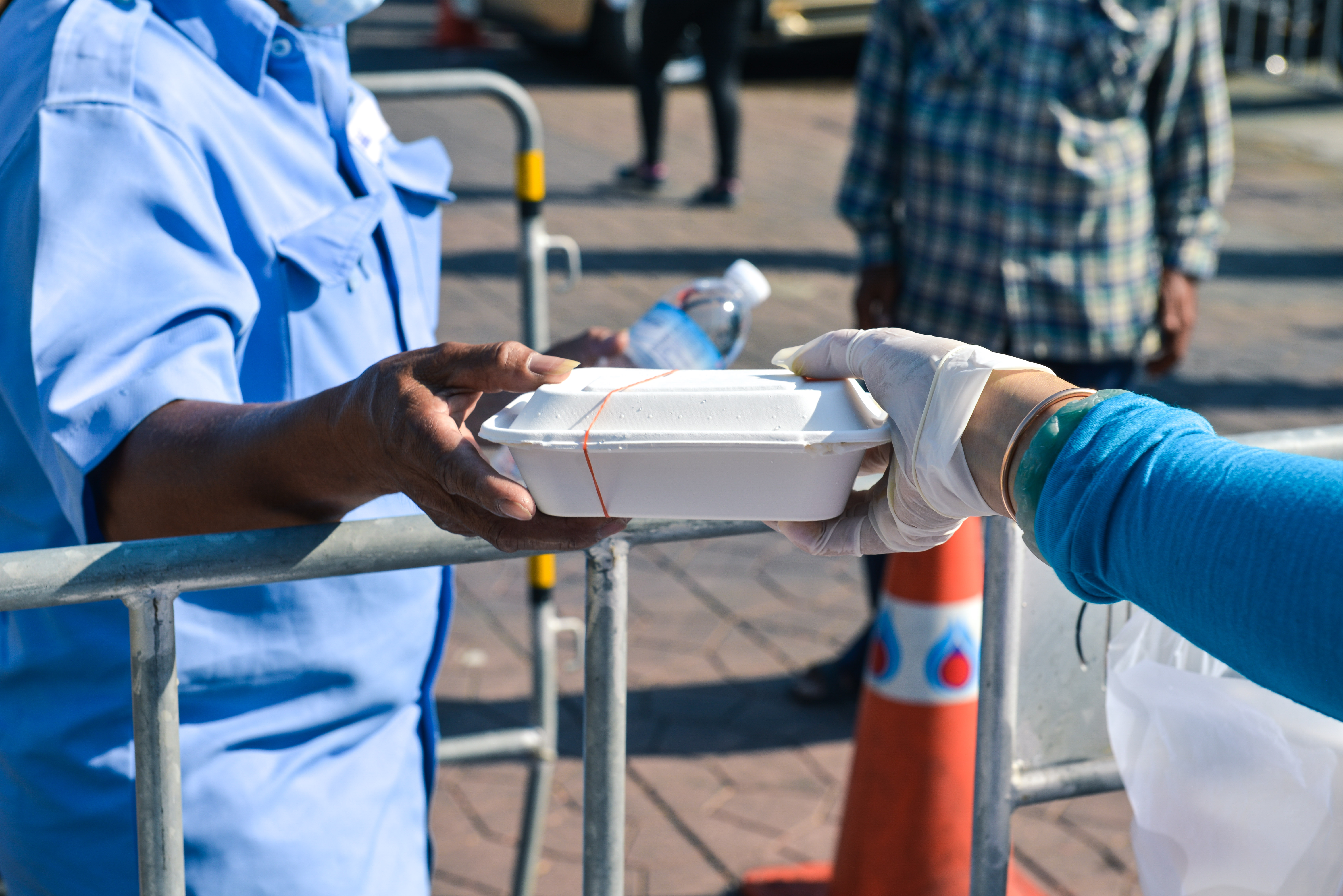Contact Us
To provide feedback on the Community Policing Dispatch, e-mail the editorial board at CPDispatch@usdoj.gov.
To obtain details on COPS Office programs, publications, and resources, contact the COPS Office Response Center at 800-421-6770 or AskCopsRC@usdoj.gov

U.S. Department of Justice
Office of Community Oriented Policing Services
Washington, DC 20530
Throughout 2020, community members have been encouraged to stay in their homes to prevent the spread of COVID-19. This raises the question: What about those who lack consistent shelter?
According to the 2019 Annual Homeless Assessment Report to Congress released by the U.S. Department of Housing and Urban Development (HUD), about 568,000 people experienced homelessness on a single night in January 2019.1 Although homelessness declined in some states during 2019, in others, such as California, homelessness continued to rise. Moreover, with the economic hardships of the global pandemic impacting families and individuals across the nation, many anticipate a continued rise in the homeless population as a result of evictions initially halted by state orders. Further, concerns have arisen surrounding the early release of individuals from detention centers who may not have social supports such as housing—which may contribute to further rises in the homeless population.
The Seattle (Washington) Police Department (SPD) is collaborating with local partners for homeless individuals not willing to receive services. The SPD has distributed more than 1,000 hygiene kits that include paper towels, soap, water, and more.
In many instances, it has fallen to law enforcement not only to provide medical care and awareness of the pandemic to homeless individuals but also to collaborate with city, businesses, and community services to provide them with adequate shelter from exposure to the virus.
Through the Collaborative Reform Initiative Technical Assistance Center (CRI-TAC), the International Association of Chiefs of Police (IACP) has monitored the impacts of COVID-19 on policing and identified unique and innovative initiatives that agencies across the United States have implemented in response to the COVID-19 pandemic. This active collection of information through the CRI-TAC has shown that—based on the needs of their community—many agencies are focusing on outreach efforts to protect this vulnerable population.
 While it may seem easy to broadcast a message to the public through social
media, radio, or television, this task becomes more challenging when
vulnerable populations do not have access to these media outlets. For a
message to reach the homeless population, it is imperative that an agency
think creatively and initiate a positive relationship with community
partners such as local homeless shelters or mental health professionals. By
working with local partners, law enforcement might raise awareness of a
health crisis through public options including billboards, signs on public
transportation, and flyers in frequently visited areas.
While it may seem easy to broadcast a message to the public through social
media, radio, or television, this task becomes more challenging when
vulnerable populations do not have access to these media outlets. For a
message to reach the homeless population, it is imperative that an agency
think creatively and initiate a positive relationship with community
partners such as local homeless shelters or mental health professionals. By
working with local partners, law enforcement might raise awareness of a
health crisis through public options including billboards, signs on public
transportation, and flyers in frequently visited areas.
Agencies have also taken the approach of interacting directly with the homeless population and applying appropriate safety precautions such as the use of personal protective equipment. Many agencies have implemented community response units (CRU) or crisis intervention teams (CIT) that regularly engage with their communities’ homeless populations. During the pandemic, these specialized units work with local partners to provide hygiene kits that could consist of paper towels, soap, and water while also educating homeless individuals on social distancing, additional guidelines for preventing the spread of COVID-19, and safe places to stay.
The Minnehaha County (South Dakota) Sheriff’s Office created the Alliance program, which identified vulnerable populations in their prison system like homeless or elderly individuals. They worked with local shelters and hotels to prepare for the re-entry of these inmates and offer a place to stay while awaiting test results or during their mandated quarantine.
With rising concerns about the capacity of homeless shelters and their ability to adhere to guidelines from the Centers for Disease Control and Prevention, agencies have also collaborated with city planners to secure additional locations for the homeless community during the COVID-19 outbreak. For example, some agencies have directed their elderly homeless population—as well as those with compromised immune systems or underlying illnesses—to recreation centers, hotels, and casinos. Regardless of approach, agency leaders should foster a culture of physical wellness among their officers and deputies while the officers maintain their duty to serve community members. By working with community partners and enacting creative solutions, agencies have sought to provide adequate care and resources to their homeless populations in this time of heightened need.
If your agency is interested in receiving technical assistance on community engagement or other critical need areas, please reach out to the CRI-TAC.
Learn More
To learn more about the CRI-TAC, download a brochure, or request assistance for your agency, visit the CRI-TAC website.
Camryn Nethken
Project Coordinator, IACP
References
1 Megan Henry et al., The 2019 Annual Homeless Assessment Report (AHAR) to Congress Part 1: Point-in-Time Estimates of Homelessness (Washington, DC: U.S. Department of Housing and Urban Development, 2020), 4, https://www.huduser.gov/portal/sites/default/files/pdf/2019-AHAR-Part-1.pdf.
Subscribe to Email Updates
To sign up for monthly updates or to access your subscriber preferences, please enter your email address in the Subscribe box.






